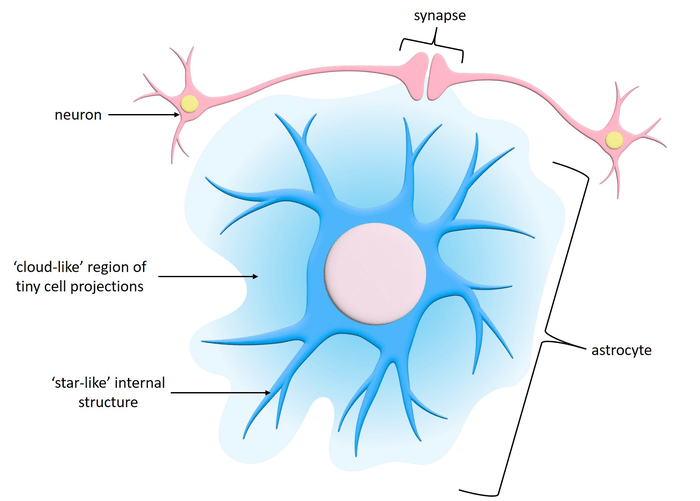Can stargazing enlighten the ways in which we experience the world? You don’t have to be outdoors on a clear night – the stars are in our brains. Scientists have discovered that star-shaped cells in the brain, called astrocytes, are shooting out ultra-fast signals that may be important to how we think, move, and learn.
Thanks to advanced imaging and analysis techniques, scientists at the Okinawa Institute of Science and Technology Graduate University (OIST) can image single astrocytes in unprecedented detail, sending signals at unprecedented speeds. Patterns of signaling activity seem to correspond to specific behaviors.
“If these implications are true, it will fundamentally transform how we think about neuroscience and the way the brain works,” says Dr. Leonidas Georgiou, in the Optical Neuroimaging Unit at OIST, in a statement.
Neurons are just half the cells in the brain. The remaining space is filled with many other types of brain cells, including astrocytes. “It was thought that astrocytes were just helper cells, supplying the neurons with nutrients and removing their waste,” says Professor Bernd Kuhn, head of the Optical Neuroimaging Unit.
There is increasing evidence, however, that astrocytes detect chemical messages sent between neurons. The cells respond with their own signals, adding complexity to the processing of information.
Previously recorded signals in astrocytes traveled at one-tenth the speed of signals in neurons. Scientists believed that the cells were too slow for processing information. The new technology showed, for the first time, that astrocytes generate signals which are as fast as the signals of neurons, lasting fewer than 300 milliseconds.

The research team labeled the active parts of the astrocytes with a fluorescing virus. Then, they used a powerful, homebuilt microscope to image single astrocytes, while the mice were awake and moving. With an advanced computer program they evaluated signal patterns in the images.
Very little signaling occurred with stimulating the animals’ whiskers, but certain behaviors, like running or walking, resulted in high levels of activity. The scientists realized that there were certain areas in the astrocytes in which levels of activity were higher, that they called hotspots. Different behaviors corresponded to specific hotspot patterns.
“These hotspot maps are like fingerprints – for a specific behavior, they are stable over time, remaining the same over a period of days, and unique to each astrocyte,” said Dr. Georgiou.
Dr. Kuhn speculates that these hotspot maps could represent memory engrams – a pattern that represents a specific behavior or a memory. Memory engrams are still theoretical, and highly controversial, he acknowledged. “It’s likely too good to be true, but it’s an exciting hypothesis to follow up on.”
Above: The scientists found that specific locations within an astrocyte showed higher levels of activity. The hotspot map changed depending on the behavior of the mouse, for example, resting or running, during the recording.
The study is published in Science Advances.












